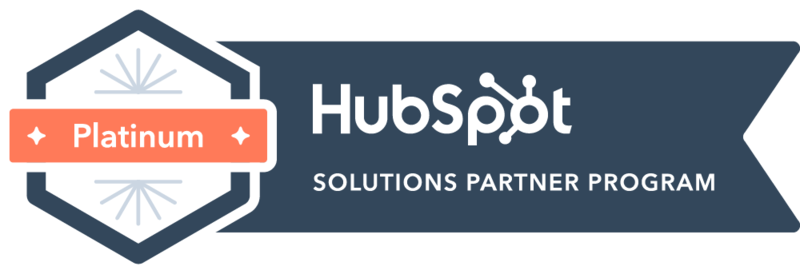Account Based Marketing is one of the biggest topics in marketing this year - a trend set to continue according to the results of B2B Marketing’s census at the end of 2017, which found that an overwhelming 80% of businesses expected their ABM activity to increase over the next 12 months. And it makes sense really, if you think about it. Some of the strongest trends in marketing include hyper-personalisation, made possible by advances in technology, and the emergence of GDPR, which from May will enable prospects to quite literally switch you off if your communications aren’t sufficiently compelling or relevant.
Whilst marketing teams may be eager to embrace the ABM philosophy, for many the barrier is knowing how to get started.
ABM is not a marketing activity – it’s a collaborative piece of strategic work that is a true combination of sales and marketing. First and foremost, you must jointly prioritise your prospects, identifying those with the strongest opportunity for your organisation. Start small – this will be the start of an iterative learning process and in trying to cover too many prospects, you’ll spread your resources too thinly and the activity is doomed to fail.
Once you have identified your top two to three, it’s time to enter your research and planning phase. The strength of your success hinges on your ability to resonate with your prospect, and that means taking the time to really understand them. Use all of the insight channels available to you – as well as the classic market share and landscape reports, tactics such as social listening work really well! Subscribe to market updates and news alerts too. Both are great ways of tracking general industry updates, as well as company-specific information about your target organisation.
Identify the key stakeholders in your prospect’s decision-making unit and consider the environments, pressures and desired outcomes for each of those stakeholders. This insight will start to inform your activity framework, from which you’ll develop tailored messaging and execution formats relevant to the needs of your target individuals.
Start creating conversation
Creating bespoke messaging houses for your stakeholders is a great way of ensuring that your marketing messaging is rooted in their needs and interests, so your approach to them is meaningful. It also enables you to identify any gaps in your proposition or service, that would make a big difference to your customer’s role or organisation. Those messaging houses then become the basis for your communication strategy.
ABM is all about building relationships, dialogue and a closeness between your companies. Once you know who you want to talk to and what you want to say, you’ll need to start creating opportunities for conversation. Your tactics will vary depending on the needs of the individuals you’re targeting, but will likely include a blend of one-to-one meetings, innovation days, account-specific thought leadership, customised collateral and social engagement. Face time is key so you can talk directly, validate the assumptions formed during your research phase and refine your proposition and marketing. When it comes to events, think small and intimate. Think tanks and round tables will enable your prospects to make their voices heard more clearly than large-scale conferences, so you’ll learn much more.
Trial, test, learn, repeat
ABM will be an enormous learning curve for everyone involved. As a team, you’ll discover the research techniques, approaches, tactics and ways of working that are most effective for your prospects and your organisation. As your ABM activity becomes more established, you’ll become more skilled. You’ll be better able to grow the number of prospects you’d like to target, taking learnings from previous activities to inform your plans.
That said, by its very nature, ABM is bound to become harder. As more and more organisations start to implement the approach, the more you must elevate the quality of your marketing if you are to cut through to your prospects effectively. For me, the difference lies in the research phase. By taking the time to understand your prospects’ world – and recognising that ABM is a long game – you stand to make a stronger mark.
Tips for success
-
Get buy-in up front. ABM is no quick fix – you’ll need to invest for longer term results, and your organisation must be prepared to wait! While the results may be slower, they can be far more significant. It’s vital that your sales team is fully on board too – they’ll be one of your primary sources of insight as well as a key execution channel, so without their buy-in, it won’t work.
-
Set realistic timeframes. ABM is usually used as a means of engaging your high value, strategic accounts, and as such will not produce overnight results. It’s vital that as an organisation you set realistic timeframes – this should include engagement milestones as well as long-term sales success.
-
Integrate ABM into your account planning process. ABM should be a company-wide, strategic business initiative – not just a marketing campaign. As such, it must be committed to within sales account planning to avoid becoming a series of tactical actions.
-
Tell a story. As humans, we engage better with stories than a stream of facts. In constructing relevant narrative and story-telling techniques, your message stands a better chance of being heard and retained.
Finally, ABM is a brilliant tool in your marketing toolkit, but it’s not the answer for your whole audience. Don’t forget the other elements of your marketing plan for those prospects that don’t fall into your chosen top few – they’re still important! Be integrated in your approach and focus on content, and you may find that there are cross over opportunities throughout your wider marketing function.






 Emma Crofts
Emma Crofts
 Alexander Costello
Alexander Costello
 Mike Nicholls
Mike Nicholls






.png)


